This article is designed to take you through creating an Intune Policy to Enable Interactive Logon Don’t Display Last Signed-in. We’ll make use of Intune’s Settings Catalog to enforce this policy.
Interactive logon Don’t display last signed-in Policy security configuration dictates whether the Windows sign-in screen will reveal the username of the most recent user who signed in on this PC. Enabling this policy ensures that the username remains undisclosed while disabling it allows the display of the username. The default setting is disabled.
A potential threat actor with console access, such as someone with physical proximity or the ability to connect through Remote Desktop Services, may observe the username of the most recent user who logged onto the server. Subsequently, the attacker might attempt to guess the password, employ a dictionary attack, or execute a brute-force attack to gain unauthorized access.
Understanding the default behaviour is crucial for administrators managing security policies across different Windows environments. This security setting applies to various Windows versions, and the default configuration may vary.
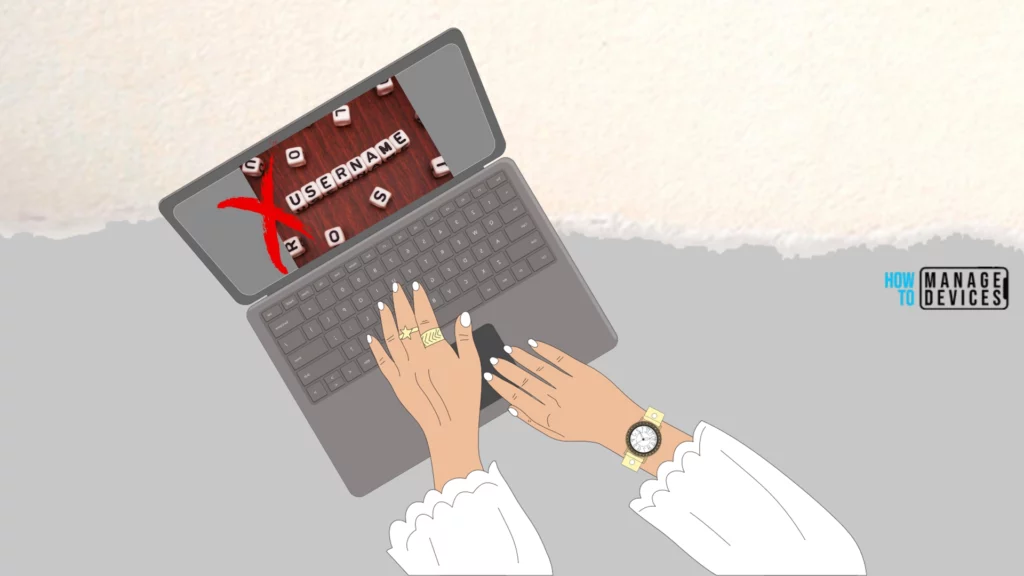
Enable Interactive logon Don’t display Last Signed-in Intune
To implement Enable Interactive logon Don’t display last signed-in Policy Utilizing Intune, follow the steps stated below:
- Sign in to the Intune Admin Center portal https://intune.microsoft.com/.
- Select Devices > Windows > Configuration profiles > Create a profile.
In Create Profile, I select Windows 10 and later in Platform and select Profile Type as Settings catalog. Click on the Create button.
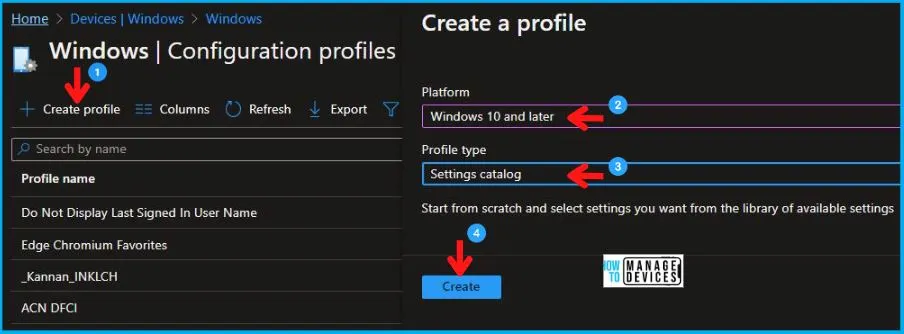
On the Basics tab pane, I provide a name for the policy as “Enable Interactive logon Don’t display last signed-in Policy.”
- Optionally, if you want, you can enter a policy description and proceed by selecting “Next“.
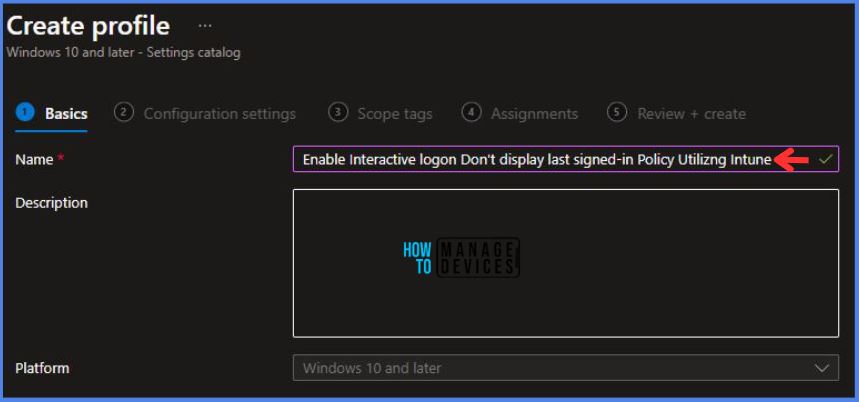
Now in Configuration Settings, Click Add Settings to browse or search the catalog for the settings I want to configure.
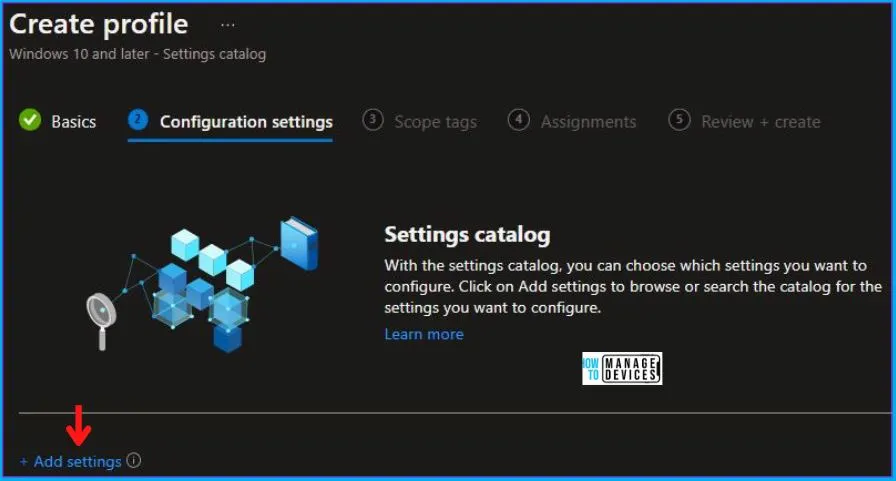
In the Settings Picker windows. I searched for the keyword Interactive logon. I found the category Local Policies Security Options and selected this.
- Create Intune Policy to Block Microsoft Accounts
- Create an Accounts Enable Guest Account Status Policy with help of Intune
When I select that option as stated above, I see the sub-category Interactive Logon Do Not Display Last Signed In. After selecting that, click the cross mark at the right-hand corner, as shown below.
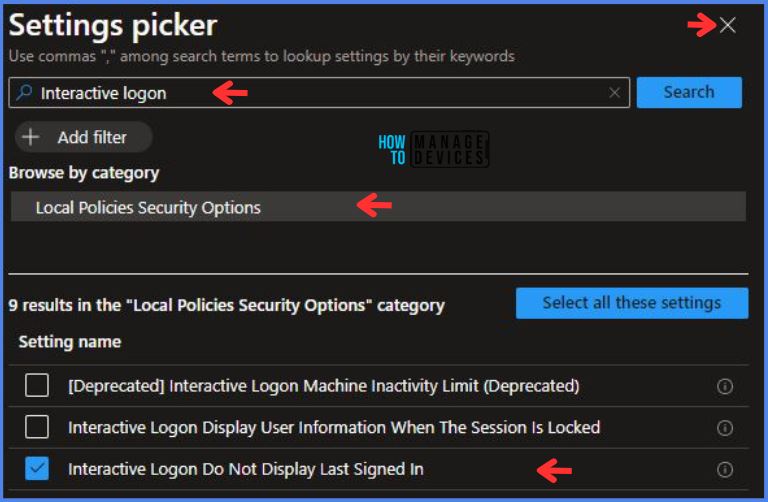
Here I choose Enabled (username will not be shown) for Interactive Logon Do Not Display Last Signed In in Local Policies Security Options.
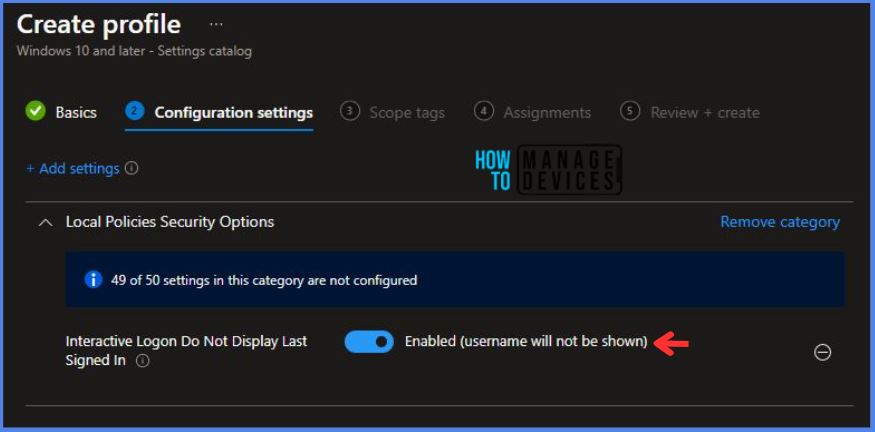
Using Scope tags, you can assign a tag to filter the profile to specific IT groups. One can add scope tags (if required). More details on Intune Scope Tags Implementation Guide.
- Click Next to continue.
Now in Assignments, in Included Groups, you need to click on Add Groups and choose Select Groups to include one or more groups. Click Next to continue.
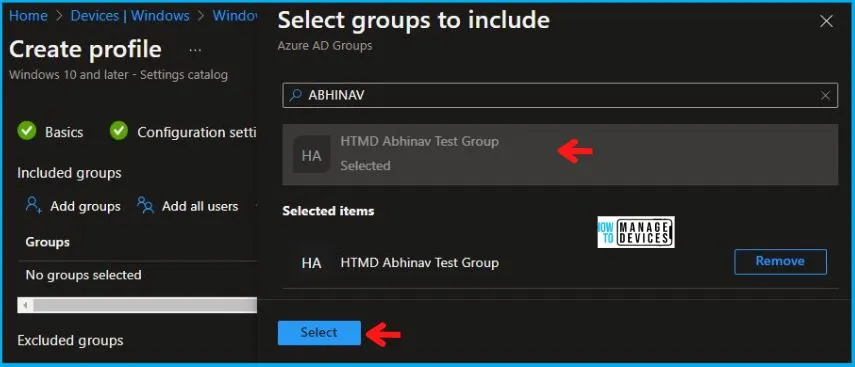
In the Review + Create tab, I review settings. After clicking on Create, changes are saved, and the profile is assigned.
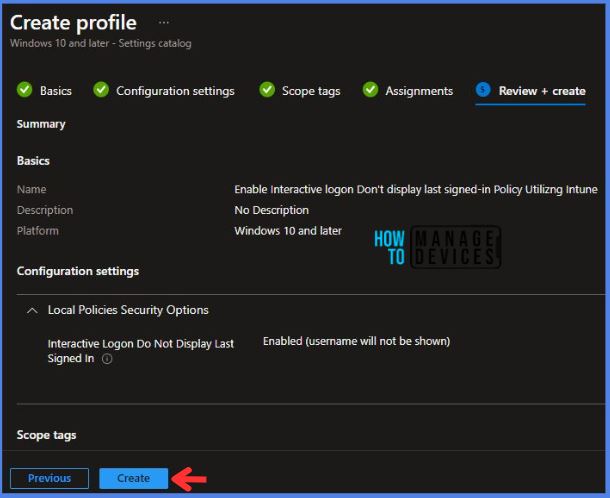
After successfully creating the “Enable Interactive logon Don’t display last signed-in Policy,” a notification will appear in the top right-hand corner confirming the action. You can also verify the policy’s existence by navigating to the Configuration Profiles list, where it will be prominently displayed.
Your groups will receive your profile settings when the devices check in with the Intune service. The Policy applies to the device.
Intune Report for Enable Interactive logon Don’t display last signed-in Policy
From the Intune Portal, you can view the Intune settings catalog profile report, which provides an overview of device configuration policies and deployment status.
To track the assignment of the policy, you need to select the relevant policy from the Configuration Profiles list. Then, you can review the device and user check-in status to determine whether the policy has been successfully applied.
- If you require more detailed information, you can click on “View Report” to access additional insights.

Windows CSP Details InteractiveLogon_DoNotDisplayLastSignedIn
We will see Windows CSP Details for this Policy setting InteractiveLogon_DoNotDisplayLastSignedIn. Administrators can tailor the sign-in screen behaviour by configuring the “Interactive logon: Don’t display last signed-in” policy to meet their organisation’s security and user experience requirements.
CSP URI – ./Device/Vendor/MSFT/Policy/Config/LocalPoliciesSecurityOptions/InteractiveLogon_DoNotDisplayLastSignedIn

Intune MDM Event Log – Interactive logon Don’t display last signed-in Policy
To verify the successful implementation of String or integer policies for Interactive logon Don’t display last signed-in Policy on Windows 10 or 11 devices through Intune, you can leverage event IDs 813 and 814.
These event IDs provide valuable insights into the Blocking Microsoft Accounts Policy’s application status and the specific value assigned to the policy on those devices. In the case of this particular policy, the value is an Integer and is linked to the event ID 813.
By analyzing these event IDs, you can gain a clear understanding of the policy’s application status and the corresponding value associated with it on the devices in question.
To confirm this, you can check the Event log path – Applications and Services Logs – Microsoft – Windows – Devicemanagement-Enterprise-Diagnostics-Provider – Admin.
MDM PolicyManager: Set policy string, Policy: (
